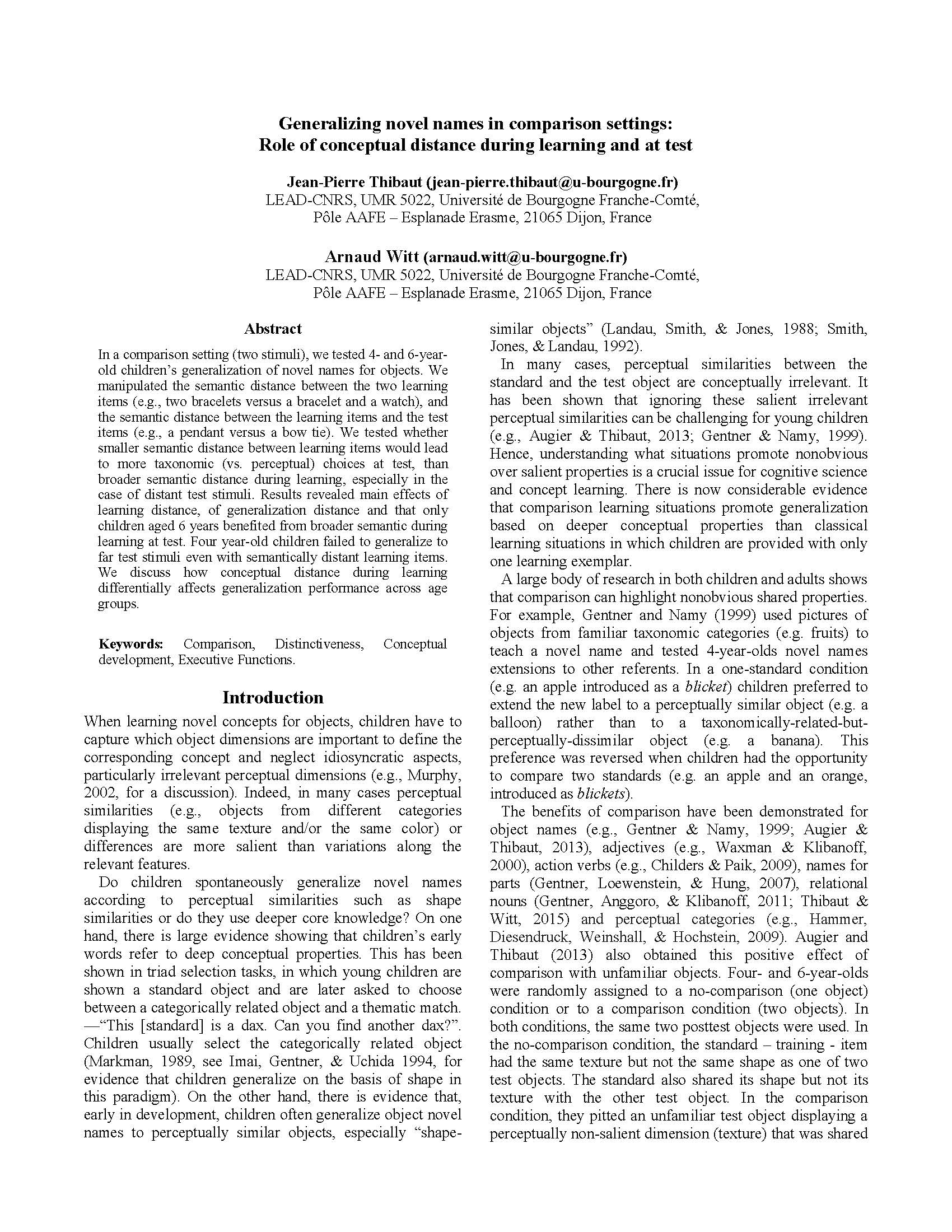In a comparison setting (two stimuli), we tested 4- and 6-year-old children’s generalization of novel names for objects. We manipulated the semantic distance between the two learning items (e.g., two bracelets versus a bracelet and a watch), and the semantic distance between the learning items and the test items (e.g., a pendant versus a bow tie). We tested whether smaller semantic distance between learning items would lead to more taxonomic (vs. perceptual) choices at test, than broader semantic distance during learning, especially in the case of distant test stimuli. Results revealed main effects of learning distance, of generalization distance and that only children aged 6 years benefited from broader semantic during learning at test. Four year-old children failed to generalize to far test stimuli even with semantically distant learning items. We discuss how conceptual distance during learning differentially affects generalization performance across age groups.
Generalizing novel names in comparison settings: Role of conceptual distance during learning and at test
